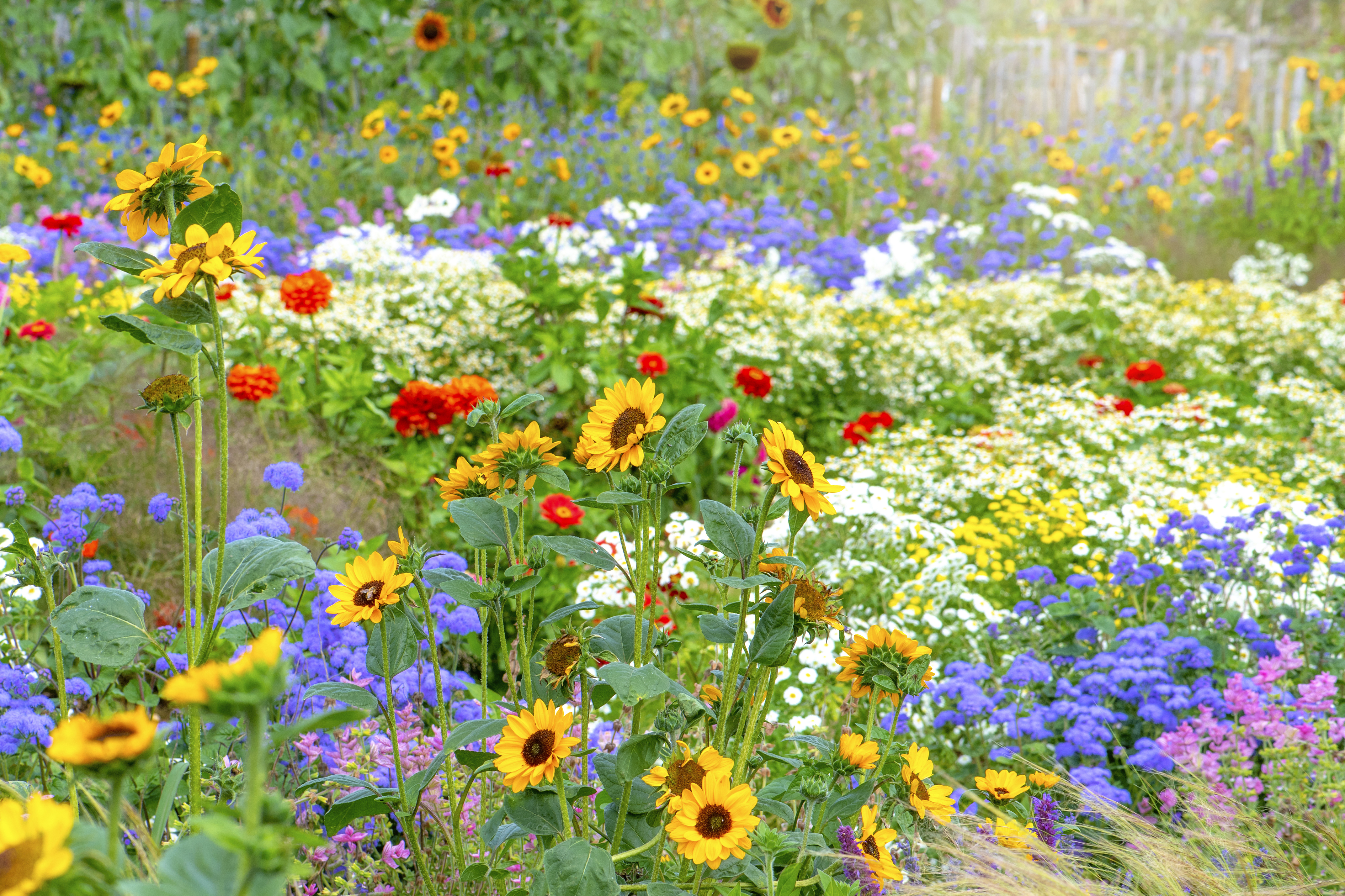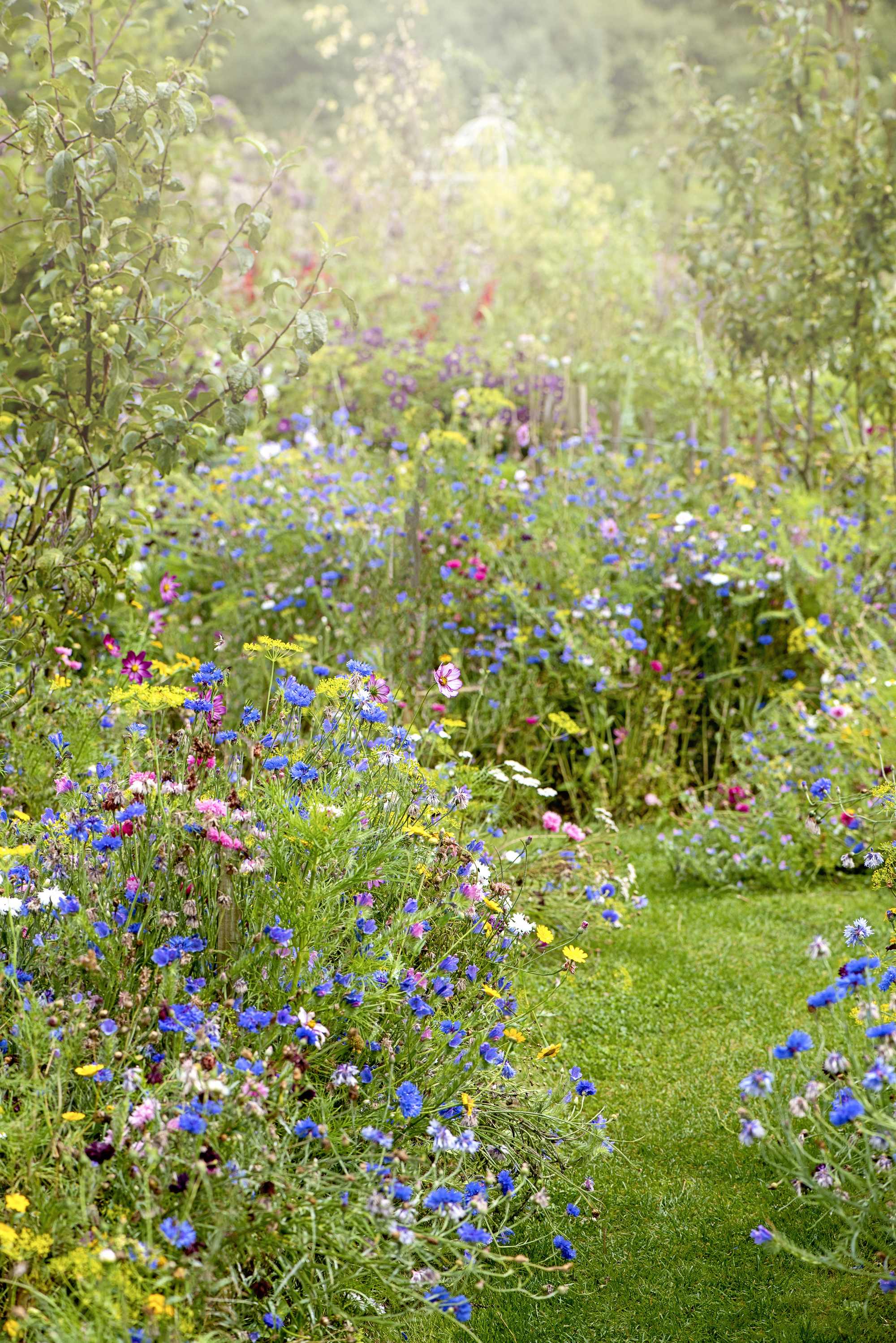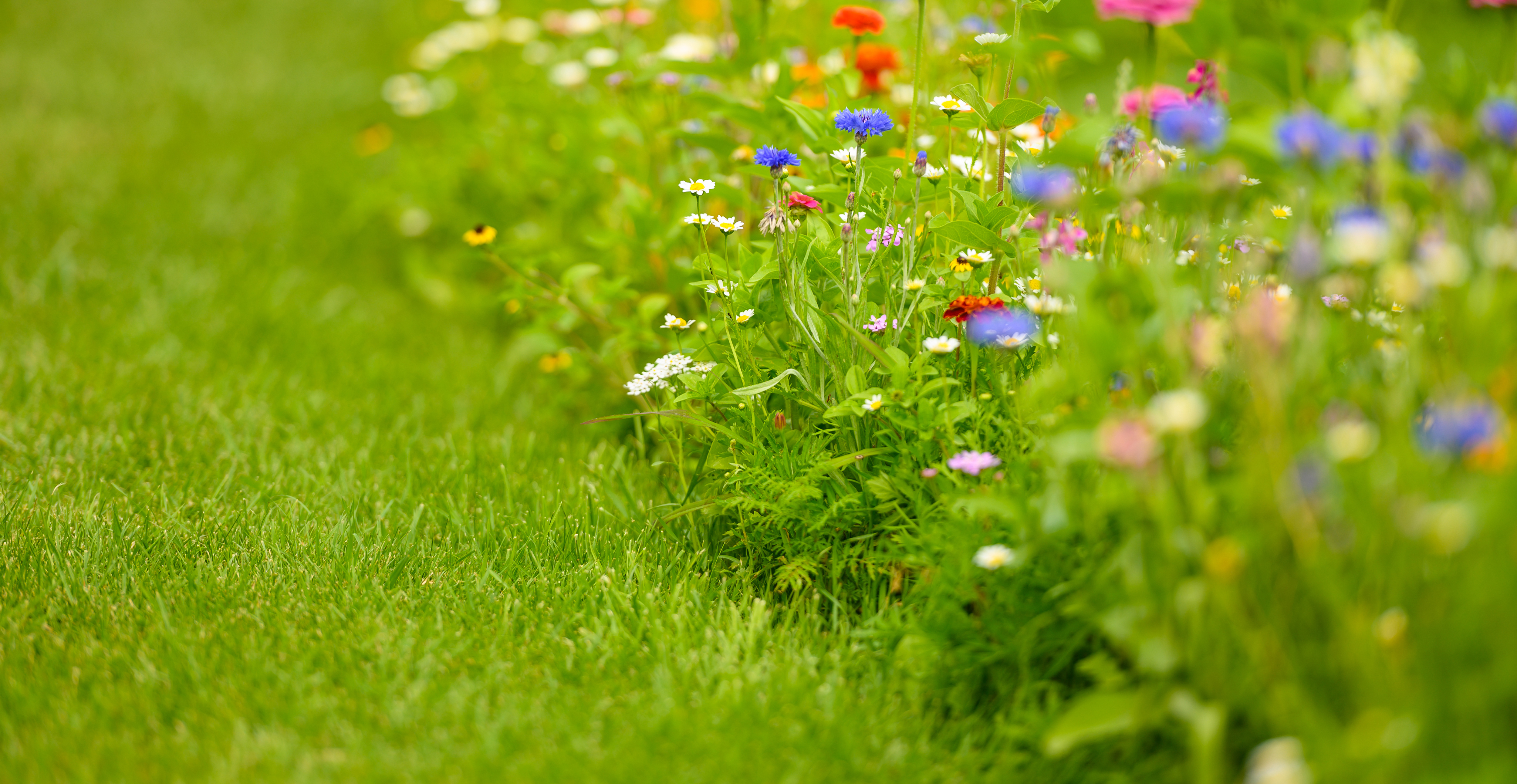
Does the painstaking process of planning put you off gardening? Are you too laissez-faire to commit to sowing seeds at the right time? Do you want to be able to call yourself green-thumbed without giving up your life to tend your backyard? Well, chaos gardening might be the carefree approach to planting you need.
This latest sustainable gardening trend takes a more relaxed approach to planting flowers, shrubs, or veggies, and it's one that even expert gardeners are getting behind. It moves away from the precise planting, obsessive potting, and perfectionist pruning we've seen in recent modern gardens, instead encouraging a more organic method that not only makes your job easier, but has practical benefits to your backyard, too. Here's everything you need to know.

What is chaos gardening?
Put simply, chaos gardening is the practice of using up whatever old seeds you have lying around - be it flowers, shrubs, herbs, or fruit and vegetables - and using them together for a varied and unpredictable planting idea.
'Chaos gardening makes use of all your old or spare seeds, scattering them randomly on the soil without worrying about organization or separation,' explains Reese L Robins, gardening expert at Just Pure Gardening. 'It embraces the natural and spontaneous processes of plants, such as self-seeding, spreading, and intermingling, creating a diverse and dynamic landscape that reflects the complexity and beauty of nature.'
As far as gardening trends go, this one is super easy, and I can almost guarantee you have some seeds floating around that are fit for the job. There are few instances in the world of gardening where you'll actually use an entire packet of seeds, and even if you're new to the gardening game, I bet there's a rogue packet in your shed or kitchen drawer that came free with a catalog.
In a nutshell, chaos gardening is all about using those up and taking a more carefree, organic approach to gardening. 'Rather than meticulously planning out every detail of your garden, it's about letting go of control and allowing nature to take its course,' explains Lina Cowley, plant expert and blogger at Trimmed Roots. 'This means allowing plants to grow freely and intermingle with one another, creating a beautiful, wild landscape that is both practical and aesthetic.'-

What are the benefits?
Besides making use of all your spare seeds instead of throwing them away, chaos gardening has some other practical benefits for your backyard. Not only is it a low-maintenance gardening idea that requires little to no planning, pruning, or weeding, but the diverse planting method encourages biodiversity and wildlife into your outdoor space.
If your lack of commitment to gardening has held you back from calling yourself green-thumbed until now, then this approach is ideal for you. 'One of the major benefits of chaos gardening is that it requires less maintenance than traditional gardening techniques,' says Lina. 'Because you're allowing plants to grow naturally, there is less need for pruning, staking, and other time-consuming tasks. This means that you can spend more time enjoying your garden and less time tending to it.'
Of course, such a diverse and mixed approach to gardening comes with some aesthetic benefits as well. 'Chaos gardening creates a natural and wild look that stands out from the artificial and orderly look of conventional gardens,' explains Reese. 'It produces a variety of shapes, colors, textures, and scents that appeal to the senses and create interest.'

How do you create a chaos garden?
If the thought of randomly scattering some seeds sends you into panic mode, then feel free to plan some chaotic landscaping ideas. Whether you designate that bare patch of lawn to your random planting or your use it to fill out your existing flower beds, there are so many directions to take this gardening method, just don't overthink what it is you're planting.
'You might choose to plant a wildflower meadow where a variety of flowers can grow and intermingle freely, or you might opt for a more structured approach, using hardscaping elements like rocks and pathways to create a sense of order amidst the chaos,' Lina suggests. 'Ultimately, the key to successful chaos gardening is to strike a balance between wildness and control, creating a landscape that is both beautiful and functional.'
Reese advises paying just a small amount of attention to the lighting conditions of your plants so that you can choose an area that's sunny or shady depending on their needs. In terms of landscaping ideas, he suggests creating a cozy hidden nook alongside some garden furniture for a place to relax. 'You can also create a compact, portable garden in a raised bed or container that can be moved around or changed easily,' he adds.
Really, the world is your oyster - just be open to experimentation and avoid over-planning. As Lina puts it: 'Chaos gardening is all about celebrating the natural world and its many quirks and imperfections, so don't worry if your garden isn't perfect – embrace the chaos and enjoy the ride!'
5 tricks for effective chaos gardening
Now, we know we said there are no rules - and there's really no right or wrong way of chaos gardening - but there are a few tricks that you'll want to know if you want the chaotic patch of your backyard to produce the best results.
1) Use a mixture of seeds
For a chaotic garden patch that doesn't look too uniform, be sure to use a diverse mixture of seeds. Some will thrive while others won't, but just trust nature to do its thing. 'It's also a good idea to mix seeds with different germination rates and growth habits to ensure a continuous and diverse display of plants throughout the season,' says Reese.
2) Choose native plants
If you want your plants to thrive, make sure they're suitable for your hardiness zone. 'It's important to choose plants that are well-suited to your climate and soil type,' explains Lina. 'Native plants are always a good choice, as they'll thrive in your local environment with minimal maintenance.'
3) Water little and often
When you're using such a diverse variety of plants, it can be tricky to give them all the right watering needs. To avoid any risk of over or underwatering, opt for a little and often. 'Water and fertilize your chaos garden occasionally to give it a boost, but don’t overdo it, as some plants may prefer dry or poor soil conditions,' Reese says.
4) Group plants with similar growing habits
On that note, if you want to cut out the guesswork, it's a good idea to group plants with similar growing habits. 'You should also consider the layout of your garden, and how you want plants to interact with one another,' says Lina. 'Grouping plants with similar growing habits and watering needs can help create a more cohesive look.'
5) Harvest any crops regularly
Finally, if you have herbs, veggies, or fruit in your chaos garden, you'll want to harvest it regularly to encourage growth and make the most of your delicious home-grown produce. 'Just leave some behind for the wildlife and for self-seeding purposes,' suggests Reese.







